Salicylic diamines selectively eliminate residual undifferentiated cells from pluripotent stem cell-derived cardiomyocyte preparations
- PMID: 33504837
- PMCID: PMC7841182
- DOI: 10.1038/s41598-021-81351-z
Salicylic diamines selectively eliminate residual undifferentiated cells from pluripotent stem cell-derived cardiomyocyte preparations
Abstract
Clinical translation of pluripotent stem cell (PSC) derivatives is hindered by the tumorigenic risk from residual undifferentiated cells. Here, we identified salicylic diamines as potent agents exhibiting toxicity to murine and human PSCs but not to cardiomyocytes (CMs) derived from them. Half maximal inhibitory concentrations (IC50) of small molecules SM2 and SM6 were, respectively, 9- and 18-fold higher for human than murine PSCs, while the IC50 of SM8 was comparable for both PSC groups. Treatment of murine embryoid bodies in suspension differentiation cultures with the most effective small molecule SM6 significantly reduced PSC and non-PSC contamination and enriched CM populations that would otherwise be eliminated in genetic selection approaches. All tested salicylic diamines exerted their toxicity by inhibiting the oxygen consumption rate (OCR) in PSCs. No or only minimal and reversible effects on OCR, sarcomeric integrity, DNA stability, apoptosis rate, ROS levels or beating frequency were observed in PSC-CMs, although effects on human PSC-CMs seemed to be more deleterious at higher SM-concentrations. Teratoma formation from SM6-treated murine PSC-CMs was abolished or delayed compared to untreated cells. We conclude that salicylic diamines represent promising compounds for PSC removal and enrichment of CMs without the need for other selection strategies.
Conflict of interest statement
The use of the compounds described in this study for elimination of PSCs from their differentiated derivatives is covered by the Patent Application No. 18796954.8-1111. The authors A.B., T.Š., K.B. and J.H. are listed as inventors on this application. These authors declare no additional competing interests. The authors H.T., S.H., M.O., G.P., J.W.K., W.H. and K.P. declare no financial or non-financial conflicts of interest. Results described in this manuscript were used by K.B. in partial fulfillment of the requirements for the PhD degree at the University of Cologne.
Figures

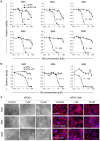

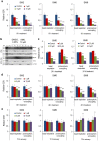
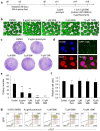
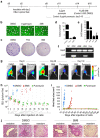
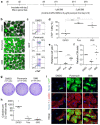
Similar articles
-
A massive suspension culture system with metabolic purification for human pluripotent stem cell-derived cardiomyocytes.Stem Cells Transl Med. 2014 Dec;3(12):1473-83. doi: 10.5966/sctm.2014-0072. Epub 2014 Oct 29. Stem Cells Transl Med. 2014. PMID: 25355733 Free PMC article.
-
A new class of pluripotent stem cell cytotoxic small molecules.PLoS One. 2014 Mar 19;9(3):e85039. doi: 10.1371/journal.pone.0085039. eCollection 2014. PLoS One. 2014. PMID: 24647085 Free PMC article.
-
A novel purification method of murine embryonic stem cell- and human-induced pluripotent stem cell-derived cardiomyocytes by simple manual dissociation.J Biomol Screen. 2012 Jun;17(5):683-91. doi: 10.1177/1087057111434145. Epub 2012 Jan 24. J Biomol Screen. 2012. PMID: 22274911
-
MicroRNA-mediated maturation of human pluripotent stem cell-derived cardiomyocytes: Towards a better model for cardiotoxicity?Food Chem Toxicol. 2016 Dec;98(Pt A):17-24. doi: 10.1016/j.fct.2016.05.025. Epub 2016 Jun 3. Food Chem Toxicol. 2016. PMID: 27265266 Review.
-
Pluripotent Stem Cell-Derived Cardiomyocyte Transplantation for Heart Disease Treatment.Curr Cardiol Rep. 2019 Jun 21;21(8):73. doi: 10.1007/s11886-019-1171-3. Curr Cardiol Rep. 2019. PMID: 31228011 Review.
Cited by
-
Induced Pluripotent Stem Cells (iPSCs)-Roles in Regenerative Therapies, Disease Modelling and Drug Screening.Cells. 2021 Sep 5;10(9):2319. doi: 10.3390/cells10092319. Cells. 2021. PMID: 34571968 Free PMC article. Review.
-
Scalable manufacturing of clinical-grade differentiated cardiomyocytes derived from human-induced pluripotent stem cells for regenerative therapy.Cell Prolif. 2022 Aug;55(8):e13248. doi: 10.1111/cpr.13248. Epub 2022 May 9. Cell Prolif. 2022. PMID: 35534945 Free PMC article. Review.
-
Elimination of tumorigenic pluripotent stem cells from their differentiated cell therapy products: An important step toward ensuring safe cell therapy.Stem Cell Reports. 2025 Jul 8;20(7):102543. doi: 10.1016/j.stemcr.2025.102543. Epub 2025 Jun 19. Stem Cell Reports. 2025. PMID: 40541178 Free PMC article. Review.
-
Thyroid hormone enhances stem cell maintenance and promotes lineage-specific differentiation in human embryonic stem cells.Stem Cell Res Ther. 2022 Mar 21;13(1):120. doi: 10.1186/s13287-022-02799-y. Stem Cell Res Ther. 2022. PMID: 35313973 Free PMC article.
References
Publication types
MeSH terms
Substances
LinkOut - more resources
Full Text Sources
Other Literature Sources

